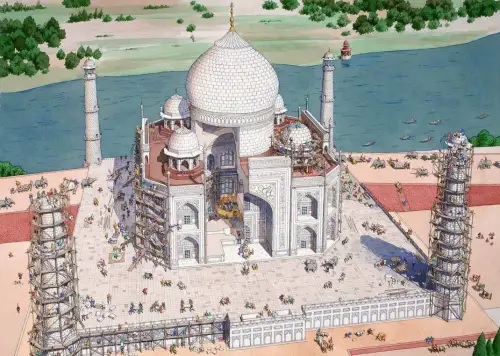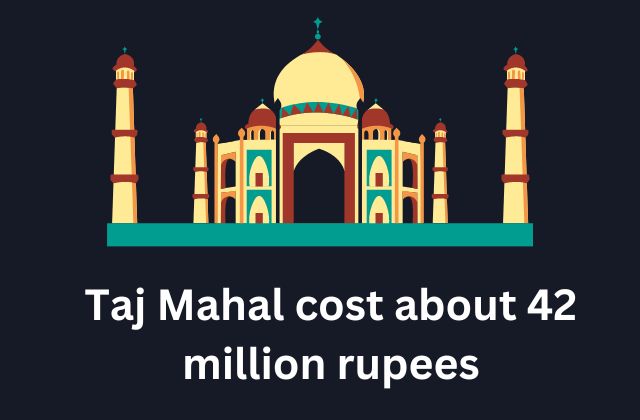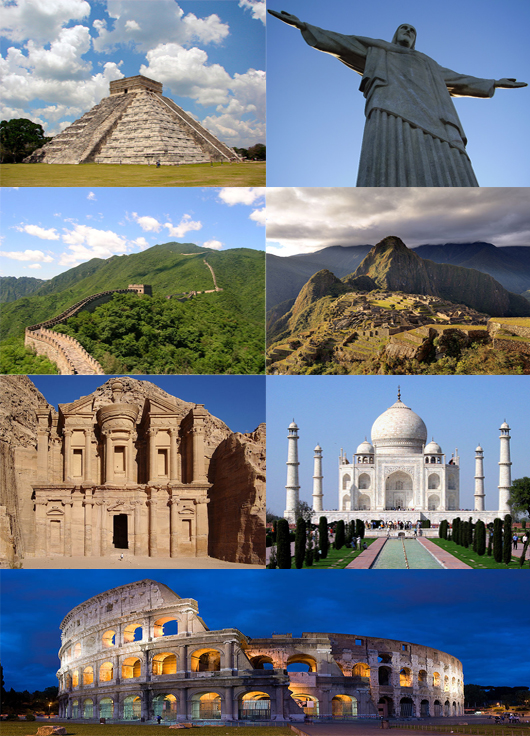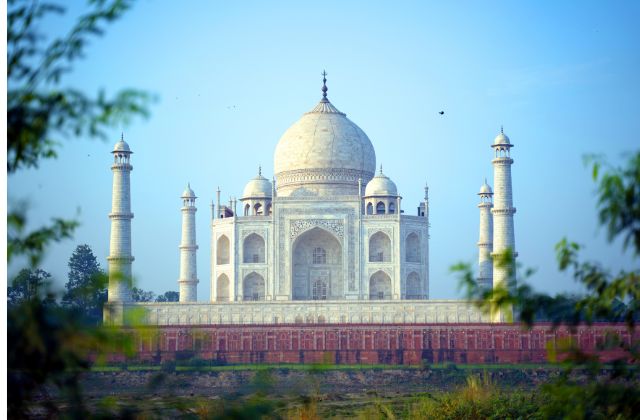12 Interesting Taj Mahal Facts For Kids (2024 Updated)
Taj Mahal is a mausoleum complex in Agra, west of the northern Indian state of Uttar Pradesh. The Mughal emperor Shah Jahan constructed the Taj Mahal to honor his wife, Mumtaz Mahal. She passed away during childbirth in 1631 after being the emperor’s constant companion since their marriage in 1612. The building is situated on the Yamuna River’s southern bank in the city’s eastern section. It is arguably the most well-known and recognizable structure in all of India.

The Taj Mahal is one of the world’s most exquisite structural compositions and one of the most recognizable landmarks, drawing in countless tourists every year.
Find out more about the monument of love in the facts below.
12 facts about the Taj Mahal.
1. Over 22,000 people worked on the construction of the Taj Mahal.

Image Source – https://dozr.com/
The mausoleum was finished by about 1638–1639 with the help of nearly 20,000 laborers from India, Persia, the Ottoman Empire, and Europe. Many historical architects have been credited with the design of the Taj Mahal’s blueprints, though Ustad Amad Lahawr was most likely the principal designer. According to the rules of Mughal building practice, the complex’s five main components—the primary gateway, the garden, the mosque, the jawab, and the mausoleum with four minarets)—were conceived and designed as a single, cohesive whole. By 1643, the additional structures were complete, but decorative work didn’t end until at least 1647.
2. The Taj Mahal is built with an optical illusion.
The Taj Mahal’s minarets are positioned in a certain way to produce an optical illusion that gives visitors the intended other-worldly feeling. The monument was built in such a way that it appears close and enormous as soon as you enter the gate since the architects and artisans were masters of proportion. But it gets smaller as you get closer to it. To prevent any visual distractions and to give the location a sense of mystery, this particular illusion was made possible by the minarets, which look to be wholly erect but tilt outward.
The minarets’ lean not only gives the building the appearance of being larger but also shields the main crypt from earthquakes.
3. There is a constant change of colors in the Taj Mahal throughout the day.
The Taj has different color values for each hour of the day and each type of weather, from the delicate dreaminess at sunrise to the intense whiteness at high noon to its chilling splendor in the moonlight. The most famous marble in the world, white Makrana marble, used to construct the Taj Mahal, plays a crucial part in how the structure changes color. The intricate cryptography demonstrates its opulent and sophisticated architecture on the walls. In the morning, the Taj would appear pinkish; in the evening, it would be milky white; and at night, it would be golden.
4. The number four appears a lot in the Taj Mahal.
Due to its significance, the number 4 is everywhere in the Taj Mahal. Four has many geometric forms, splits into equal parts, and is associated with rationality and discipline, qualities that the Mughal architects wanted. This number in architecture allows for the Taj’s flawless symmetry, which symbolizes absoluteness, architectural superiority, and reflection of global harmony. The garden is divided into four equal sections by the four waterways. Four minarets surround the mausoleum, and four smaller ones encircle the central dome.
5. It cost Rs. 42 million to make the Taj Mahal.

The Royal Treasuries of the Emperor and the Treasury of the Government of the Province of Agra provided funding for the Taj Mahal’s construction. Finances were kept up to date by the people in charge. The cost of the stones and the wages paid to the laborers were the primary sources of costs associated with building the Taj Mahal.
The Taj Mahal cost about 42 million rupees. Calculations were based on artisans’ lists. After being lost, these lists resurfaced and were Persian in origin. There are a group of about forty artisans, each with a history and a monthly salary for carrying out a specific task. Muhammad Handif, overseeing the construction, was in charge of keeping track of the financial papers.
6. The Taj Mahal had various gemstones on the mausoleum.
Across forty varieties of precious stones were transported by caravan from over the empire and beyond, including carnelian from Baghdad, jasper from Punjab, turquoise from Tibet, malachite, and crystal from Turkestan. The more exotic stones, such as malachite from Russia, and jade from Kashgar in China, were transported from some very remote locations. Yellow amber came from Burma in the east, and cat’s eyes (also known as “lahsunia”) came from as far west as the Nile Valley. Rubies and lapis lazuli came from Sri Lanka and Afghanistan, respectively.
7. The Taj Mahal is among the world’s wonders.

Image Source – https://en.wikipedia.org/
Numerous lists of the Wonders of the World have been prepared from antiquity to the present to document the most breathtaking natural features and artificial monuments in the world. The New7Wonders Foundation, a Swiss organization, launched a project in 2001 to use online voting to select the New 7 Wonders of the World from a list of 200 existing structures. The Great Wall of China is the #1 marvel of the globe, with the Taj Mahal coming in at number seven.
8. In 1987, the Taj Mahal was inscribed on the UNESCO World Heritage List.
A landmark or region with legal protection under a global agreement overseen by the United Nations Educational, Scientific, and Cultural Organization (UNESCO) is known as a World Heritage Site. UNESCO names place as World Heritage Sites when considered significant cultural, historical, scientific, or other value. According to the assessment, the locations have “cultural and natural heritage from all over the world that is thought to be of extraordinary worth to humanity.” A World Heritage Site must be an unusual landmark easily recognized geographically and historically and has outstanding cultural or physical importance to be chosen.
9. Shah Jahan did not cut his laborer’s hands after the completion of the Taj Mahal.
We all know about the folklore and history of the Taj Mahal and how Begum Mumtaz inspired its construction. But that account also includes the allegation that Shah Jahan gave orders for the hands of the artisans to be amputated when the beautiful monument was finished. Many historians contend the allegation is unsupported by solid evidence. It’s a glorified urban myth. It’s important to note that this urban legend first appeared in the 1960s. Numerous thoughts and studies have been conducted to debunk this urban legend. Thousands of masons, artisans, and other workers were housed there when Emperor Shah Jahan built it, and their descendants still live there and continue to practice their ancestor’s skills.
10. The Taj Mahal symbolizes eternal love.

The Taj Mahal, which the Mughal emperor Shah Jahan constructed for his cherished wife, Mumtaz Mahal, is a universal symbol of love. After Mumtaz Mahal passed away, the emperor gave the order to build the most spectacular memorial in the world over the graveyard of his wife. Many believe that the monarch did this to fulfill his promise to the queen during her lifetime. Mumtaz Mahal and Shah Jahan were engaged in April 1607, when she was 14 and he was 15. However, they got married after five years in Agra in May or June 1612. Shah Jahan gave her the name Mumtaz Mahal after their wedding because he “found her in look and character outstanding among all the women of the day.”
11. Over 40,000 people visit the Taj Mahal daily.
There are lots of tourists who come to see the Taj Mahal. More than 2 million visitors were recorded by UNESCO in 2001, and by 2014, that number had risen to nearly 7-8 million. According to statistics provided by the ASI, the Taj Mahal has 35,000 to 40,000 people each day, but on weekends and holidays, these numbers soar to an astounding 60,000 to 70,000 each day. There is a two-tiered pricing structure, with a much lower entrance price for Indian citizens and a higher one for foreign visitors. The site introduced fees for guests who stayed longer than three hours in 2019 to counter over-tourism.
12. Shah Jahan planned to build a black Taj Mahal as his final resting place.
The Black Taj Mahal is a fabled mausoleum made of black marble that was allegedly intended to be constructed across the Yamuna River from the Taj Mahal in Agra, India. The concept of the Black Taj was initially introduced in the fantastical writings of a French traveler called Jean Baptiste Tavernier. According to legend, Shah Jahan, the Mughal emperor, wanted a tomb for himself that resembled the one he had constructed in Mumtaz Mahal’s honor. According to Tavernier’s memoirs, Shah Jahan built his grave on the other side of the river but wasn’t able to complete it since he had been overthrown by his son Aurangzeb.
Conclusion
Percy Brown, a renowned art critic, once said, “Just as it was Augustus’ proud declaration that he discovered Rome built of bricks and left it of marble, similarly Shah Jahan had found the Mughal towns of stones, and he left them of marble.” Shah Jahan was passionate about design and construction; in addition to the Taj Mahal, he also built the Agra Fort, Red Fort, and Delhi’s Jama Masjid.
